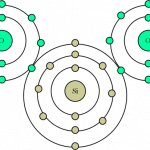Hello again everyone! How is everyone? I’m especially good because this blog we will be talking about something that makes this world go around and unites people everywhere: sports! I love sports so this mini-unit really clicked with me.
Anyways, let’s get into the post. We recently started a mini-unit in maker class where we were tasked with something very interesting: we had to design a sport! However, there were some limitations. Ms Maxwell only gave us limited materials which were a roll of duct tape, two tennis rackets, a whiffle ball, 5 solo cups and a spool of string. We had to use these materials and make up an entirely new sport!
For this challenge, I was put in a group with Gabby, Sam and Jackson. We had to collaborate our ideas to create a sport. But (game changing point right here), we had to follow something called the launch cycle to create our sport.
At first, the whole challenge was a bit overwhelming. Ms. Maxwell told us once we broke it down to this launch cycle it would all work out. And, in hindsight, it really did. I guess that’s what happens when you trust the process. Here’s what we went through in order to complete our sport:
L- look, listen and learn.
For the first part of our sport-creating process we started with L.
Look- for this, we looked at the challenge and jotted down any quick fast notes and ideas that we had.
It looked like that⬆️
Listen: for this part we as a group had to come up with questions that we had to ask our peers. With these questions we had to gather information about what people would like in a sport. My question was: do you prefer to play sports indoors or outdoors? Here’s what the results turned out like ⬇️
Learn- The data I took from this was that it didn’t matter to most people where they played their sports.
We then moved on to stage 2.
A- ask questions
For this stage we enlisted the help of all our classmates. We started in a group and wrote a few question on a piece of paper. The questions were all about our sport. Then, everyone else went to other group’s paper and wrote questions on that. By the time it was finished it looked like this⬇️
It was pretty crazy, but in the end it helped because we had to answer all of these to make our sport make sense.
After this, we went on to stage 3.
U- Understanding the process or problem.
On this stage we had to understand the problem of the whole project. The problem was we had to make the sport enjoyable for everyone. It needed to be appealing and people actually had to want to play this sport. For this stage we had to research popular sports today and find out or tell what makes them enjoyable or fun. We also had to list what made these sports boring or unenjoyable. Here’s what I came up with.
I really love golf, but it was tough putting into words how it would be exciting for people that don’t understand it.
Onto stage 4!
N- navigate ideas
For this one we had to brainstorm ideas for how our sport would work. We explored different ideas but our final idea came up something like this: there is a wide court marked with duct tape. Halfway across there is a line of duct marking halfway. One player is on each side of the marked halfway line. On each person’s side, there is a goal marked out by cups and each payer has to protect theirs using a tennis racket. The object of the game is to hit a whiffle ball with the tennis racket and try and protect your own goal. Here’s an awesome sketch with what it would look like:
This was still very rough, but we moved on to stage 5.
C- create a prototype
On this step, we had to create our game and play it. To be honest, I was relatively shocked that it had come this easy. I was excited to see what was going to come from our preparation. We set up our game in the maker room and were prepared for the best. I don’t think we should have been. Our game wasn’t exactly great. Apparently, this was normal because it led us right into phase 6!
H- highlight and fix
After testing our game, we had to fix some things. Some good points from our game was that it was fast and that you had to be able to react quickly in order to excel at the game. Some negatives were that there was way too much stoppages in play where someone would hit the ball and it would deflect off the other person’s racket and went way out of play. Another problem was that you could just smack it as hard as you could and it would just be an easy goal so it wouldn’t be much fun for the person losing. We solved these problems by creating an extensive list of rules showing what you can or can’t do. I think these rules made the game more fun and fair for everyone.
After making these necessary changes, we launched our game!
Phase 7: the launch
Unfortunately, I wasn’t there the day we launched the game to our peers (I was representing Seycove on the golf team). I can only imagine it was a *smashing* hit with our classmates. Pun intended. Here are a few picture of people enjoying our game.
Overall, this was a fun and exciting project. I think I learned a lot about the launch cycle and I think I’ve come to respect it because of its effectiveness.
Well, I think that just about wraps up this unit in maker! Be prepared for my next maker blog post: blue sky(gasp).
Signing off again,
Nik
















